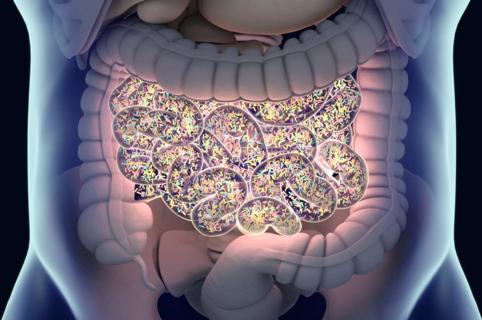S6K1 pathway could be a promising therapeutic target

Understanding how fat cells use energy is an area of great interest to obesity and metabolism researchers. Adipocyte metabolism is a complex process that involves many different proteins with various physiological functions. One such regulatory function is called protein phosphorylation.
Advertisement
Cleveland Clinic is a non-profit academic medical center. Advertising on our site helps support our mission. We do not endorse non-Cleveland Clinic products or services. Policy
Phosphorylation, the addition of a phosphate group to an amino acid, is an essential biological event that influences protein function. Phosphorylation is an extremely common, but complex, phenomenon. Understanding the mechanisms behind it helps us to understand how proteins behave and sometimes contribute to disease, including obesity.
Kinases control phosphorylation and facilitate the transfer of phosphates to target proteins. Despite the abundance of kinases, relatively little is known about how they select and bind to these proteins. The process is particularly puzzling to researchers when phosphorylation happens multiple times and at different sites within the same target protein.
A research team led by Paul Fox, PhD, has helped to elucidate how multisite phosphorylation alters adipocyte metabolism via a kinase called S6K1. They published new findings in Molecular Cell showing that the presence of insulin around adipocytes changes S6K1’s phosphorylation patterns. These chemical changes cause S6K1 to gain affinity for certain proteins. The new target proteins are phosphorylated, altering a complex, multi-step cascade of metabolic events inside the adipocyte that influences the synthesis of new fat molecules.
More data is needed to verify the physiological effects of these changes, but this study suggests that manipulating the process could have benefits in reducing insulin-stimulated adipocyte metabolism. “Our data suggest that the S6K1 pathway is a novel, attractive target for therapeutic development,” Dr. Fox said. “Our next steps are to clarify the finer mechanistic points of the pathway to narrow the focus of future anti-obesity drug discovery.” Importantly, the Fox laboratory has shown the same kinases are involved in the aging process, and new drugs could both prevent obesity and increase healthspan.
Advertisement
Dr. Fox is a staff member of the Department of Cardiovascular and Metabolic Sciences, Lerner Research Institute, and holds the Robert Canova Endowed Chair in Inflammation Research. The research was partially funded by Dr. Fox’s NIH grants P01 HL029582, P01 HL076491 and R01GM086430.
Advertisement
Advertisement

First full characterization of kidney microbiome unlocks potential to prevent kidney stones

Researchers identify potential path to retaining chemo sensitivity

Large-scale joint study links elevated TMAO blood levels and chronic kidney disease risk over time

Investigators are developing a deep learning model to predict health outcomes in ICUs.

Preclinical work promises large-scale data with minimal bias to inform development of clinical tests

Cleveland Clinic researchers pursue answers on basic science and clinical fronts

Study suggests sex-specific pathways show potential for sex-specific therapeutic approaches

Cleveland Clinic launches Quantum Innovation Catalyzer Program to help start-up companies access advanced research technology